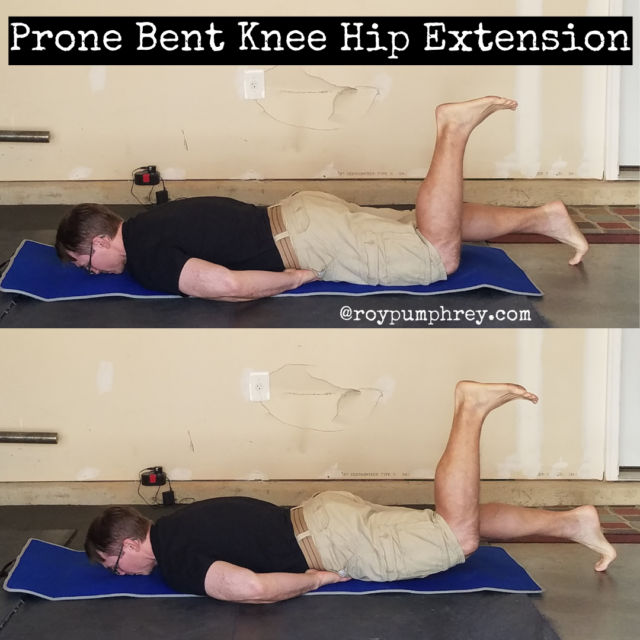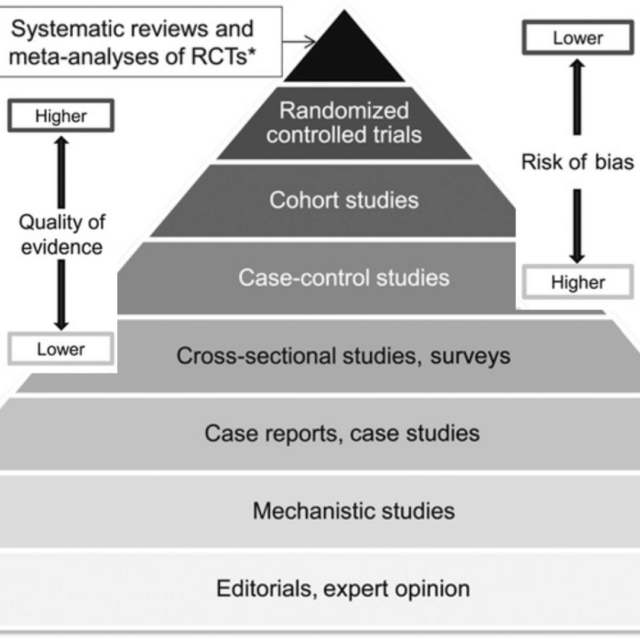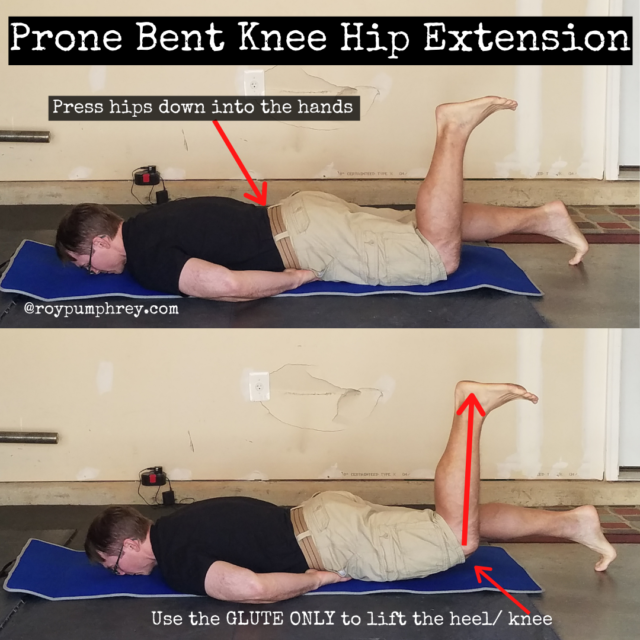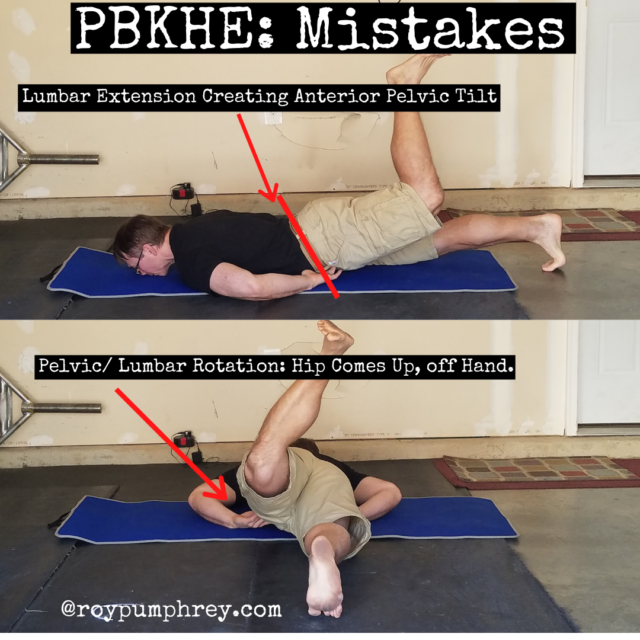
Prone Bent Knee Hip Extensions
After I put out this one about back pain I got some,
“What’s the deal with the exercise where you put your face into the ground and lift your leg”
Well, here’s the deal.
I’ve been using it a lot lately and while I can’t “prove” it.
That sh@t has been straight magic.
PBKHE are Like Gandalf.
And not, nice, grandfatherly Gandalf.
Like, You Shall Not Pass, Gandalf.
The First Step in the Scientific Method is Observation
In the absence of accumulated evidence we need to work in observation and hypothesis.
Why isn’t personal observation alone good enough?
High, high, risk of bias.

We bullshit ourselves, use logical fallacies, favorably weight our own experiences and are subject to the Dunning Kruger effect.
I think that’s my initial problem with the PBKHE
It’s such a small movement, subtle, I’m not totally sold on how it can be so effective.
Truth I Hate to Admit:
I’m often wrong.
There are MANY, MANY things that I thought were true or processes that I thought took place, and well, I was wrong.
But sometimes I’m right, and Kipping Pullups still suck, unless you’re in competition. Sorry, they just do.
But, either way, if I’m right or wrong, having more glute is probably never a bad thing. #bootygainzz
The Firing Patterns of Muscles Matter
While there is a LOT of argument lately around that statement.
I think it’s true.
“It is assumed that when a muscle responsible for a specific joint movement (the prime mover) is inhibited or weakened, the amplitude of activation is lowered and the synergistic muscles substitute and become overactive during the movement. When a muscle is tight, the irritability threshold of the muscle is believed to be decreased. With less slack to take up before contraction begins, the muscle is activated earlier than normal in a movement sequence. Thus, the patterns of tightness or weakness seen in muscle imbalance process result in alteration of normal movement pattern“- The Activity Pattern of The Lumbo-Pelvic Muscles During Prone Hip Extension In Athletes With and Without Hamstring Strain Injury
My belief is, when patterns become altered and aberrant, bad things (injuries) are more likely to eventually occur.
More likely, not assured.
I think the disconnect between the believers (like me) and the non-believers is often in the context (speed, load) under which the movement takes place.
For Example:
Gluteal Amnesia
About 15 years ago I heard the term Gluteal Amnesia for the first time.
The term Gluteal Amnesia was popularized by Stuart McGill, but the pattern of diminished or delayed onset of glute activation and its relevance in back pain was first talked about decades ago by Vladimir Janda.
Gluteal Amnesia Explained,
“It’s not that the glutes turned off completely, but instead ‘gluteal amnesia’ means the brain is diminishing neural drive and inhibiting the glute muscles from firing appropriately due to pain (a process called arthrogenic neuromuscular inhibition).”- What is Gluteal Amnesia
Unfortunately, for ease of conversation and understanding we I tell people,
“You’re glutes aren’t firing”
Well, that’s not really true.
They fire.
Just not in the pattern (glutes before spinal erectors or hamstrings) or to the degree they “should”.
Aberrant Hip Extension Pattern in Practice:
Why Does Gluteal Amnesia Matter?
Well, it might not.
Not for everyone.
Here is a nice THOUGHTFUL , somewhat counter point, but not really, post from Greg Lehman essentially arguing that Gluteal Amnesia may be much ado about nothing for most people.
IF you’re consistently doing low velocity, low amplitude movements you probably don’t “need” a perfect muscle firing sequence to be able to perform that task “normally” or pain free.
From the Lehman post,
“You don’t really need a lot of Gluteus Maximus activity to do the vast majority of daily tasks. Your glutes work during heavy load end range activities. Think sprinting, climbing or lifting heavy. You just don’t need a lot of glute activity to walk or even run. Have a look a the Dorn paper on running in 2012. It’s the calf muscles that really drive running. The hip extensors just aren’t that involved. This is also supported by the work of Rich Willy more recently where they showed that the majority of the total support moment comes from the ankle and knee with the hip playing a small role.” – Have the Butt Muscles of the World Gone Silent?
But, is that Optimal?
In my opinion, gluteal amnesia matters a lot.
Like Lehman says, “Your glutes work during heavy load end range activities”
ie. almost ALL sporting movements and many movements of life.
Why?
The Effects of Gluteal Amnesia:
Back Pain and Hamstring Strains.
A late or lacking glute drive has been observed to be a contributor to both low back pain and hamstring strains.
The argument goes,
If the glutes don’t do their job the low back and hamstrings will act as primary hip extensors and/ or pelvic stabilizers to a greater extent than they should.
I think this holds water.
Low Back:
Go here and read: Your Low Back Hurts Because of YOU
Summary position: More Ass= Less Low back
Hamstrings:
In a study that looked at Sprint mechanics under Fatigued Conditions they found that the GLUTES took over as the primary hip extensor as the hamstrings fatigued.
“Fatigue-related weakness of the hamstring muscles should be compensated by hip extensors/ gluteus maximus to allow horizontal force production and protect the hamstring muscles, as we hypothesized. However, in case the hip extensors / gluteus maximus muscles strength is impaired, due to pre-fatigue or fatigue-induced weakness, they cannot perform these roles. This scenario would place the hamstring muscles in a high-demand context, possibly higher than they can assume because of their fatigue state, and consequently expose them to increases potential damage.” – Sprint Acceleration Mechanics in Fatigue Conditions: Compensatory Role of Gluteal Muscles in Horizontal Force Production and Potential Protection of Hamstring Muscles
With glutes in a “pre-fatigued or fatigued induced state”, ie a state of decreased activation (neural drive) the hamstrings would be at risk for injury.
Just like hamstrings which are always active/ overburdened all day due to gluteal amnesia.
Hip Extension Pattern Explained:
But His Knee is Straight?
Yep, that’s what we work towards.
But, when you don’t even know what a glute is, we have to put you into a position where you’re most likely to succeed.
That means bending the knee.
This effectively shuts the hamstring down because its already shortened and needs to act in knee flexion so it cant contribute as much to hip extension.
BTW, this is called active insufficiency
Keep in mind, when you bend the knee, you WILL NOT GET FULL HIP EXTENSION.
But you will have a better chance at getting preferential glute activation.
Which can be trained, ingrained and lead to a better hip extension pattern later.
Prone Bent Knee Hip Extensions:

Checklist:
- Face down on the floor. You can have something under the head so its more comfortable. But you cant allow it to influence your spine position past the thoracic spine.
- Hands under the pelvis, on the hip bone/ belt line.
- Belt line “flat” (neutral pelvis)
- Neutral ribcage
- bend the knee to 90 degrees
- Flex the ankle
- Focus on using ONLY the glute to press the heel up.

Bro Tip:
- More is NOT better. The goal is a perfectly clean, as close to glute only movement as possible. No one cares how high you can lift your foot.
- Thinking about pressing your hips (both sides) down as you drive the heel helps.
- Smooth and controlled, using the glute, to the bottom. Don’t just get to the top and drop the knee.
Just so we’re on the same page.
PBKHE will help retrain the proper hip extension pattern, but they aint gonna fix it all.
They’re a start.


